As a child, growing up in a rural village, we were fortunate enough to have a front garden. In fact, just about all of the garden we had available was at the front. I used to yearn for the privacy of a back garden that other people seemed to have - hidden from view and protected, away from the world. I remember, during scarce time off work, my parents first planting a hedge along the low front wall for privacy. Neighbours and passersby watched. It felt very exposed, being out there on show to the world. There are probably things to be said and unpicked here about feelings of safety and belonging, for another time maybe... Now I am able to see through a different lens and from a different place in life, I can appreciate the pleasure and possibilities of a front garden for sharing beauty and connection. I love this story that Ros Ball shares here with us about a locally famous front garden held in much fondness, the tension of this and the joy of it too.
For the love of the front garden, by Ros Ball
There’s a much beloved garden in the Dulwich area of South London. People enthuse about it online and reminisce about the many years they’ve spent enjoying it. It’s not at the famous Picture Gallery or a ‘heritage’ property, it’s the front garden of a post-war, prefabricated bungalow facing onto an A-road.
In the twenty years that I’ve lived in the area I’ve been both fascinated and full of admiration for this small garden island. In recent years two neighbouring prefabs have been knocked down, leaving the one remaining bungalow in between a jumble of poorly developed housing built from the 1980s up to the present mock-victorian flats, which are squeezed into every gap around it. The whole thing has the feeling of the film 'Up' where the world is changing around an old house but it remains steadfastly the same. Decades come and go but the prefab garden always blooms with colour for at least nine months of the year and the ground is a foot higher than the pavement with the amount of organic matter added to it over time. Every spring, vigorous runner beans grow up huge metal supports and from late spring the blousy roses bloom, giving way to a sea of old fashioned dahlias in September, followed closely by sugar pink nerines.
One of the things I find most moving about this garden is how generous it is to the community with its ongoing joyful display on a busy through road. It is extremely unusual for south London where front gardens are rarely cared for and much more rarely beautiful, but this garden thrives and therefore many people store it in their memory. This includes the Head Gardener at The Exchange in Erith, Colin Stewart, who recently posted some instagram pictures of the bungalow and received over a hundred comments, often as simple as, “Have loved this garden for so many years.”
From the bus I always look out for it and see the owner, an older gentleman in jeans and a polo shirt working his spade, or sometimes he’s sitting in a chair enjoying the sun that hits the front of the house for much of the day. After years of distant appreciation I tell myself I’ll write something about this unique place, so I wait until I see him out front and ask if he’ll talk to me. When I tell him I’m a gardener and sometimes a journalist, he tells me he has recently had a few journalists coming to visit him, and one wrote lies, he says. It dawns on me that of course I’m not the only one who wants to talk to him.
He is swift to tell me, as he does multiple times throughout our conversation, that he is “not a gardener”. I scoff at this because the evidence is right in front of us. It’s a glorious afternoon and the wallflowers are in full pomp and bright purple clematis is scrambling all along the wooden boundary fence. But as we talk it becomes clear that he is firm in this assessment of himself. He’s called Peter and he has lived in the prefab since he was two years old. I quickly learn that Peter is modest, yes, but he’s also a genial wind-up merchant. He tells me he remembers when ‘Uncle Adolf’ dropped a bomb on his house and brings out a newspaper cutting of the bomb site which the building now sits on. His was one of dozens of prefabs built in the bombed out space, and one of hundreds in the area. He recounts how he once showed a couple of curious police officers around the garden, and when his neighbours asked what was happening, Peter told them he was being arrested for impersonating a gardener.
He says gardening is just something he’s always done rather than something he is particularly interested in. Nonetheless we discuss the recent summer when we both had an exceptionally bountiful tomato harvest, how he doesn’t rate garden centres and that the clematis plants were all bought from Morrisons and they’re thriving. He tells me the plants he buys are often less successful than the ones he pries out of cracks or that are grown from seed collected in his pockets on local walks. When I ask about the unusual height of the soil level he hands me a metal rod and tells me to push it into the ground. I duly do as instructed and hit what he describes as ‘pavement’. He has built up the beds with copious amounts of leaf mould because not far below him the soil stops.
Sitting on the front door step with Peter I see the view he has of the rest of the world. People going by look twice and for a bit longer than you might expect - similar to what it’s like to be famous I imagine. A woman he knows well stops to chat about the doctor's appointment she's returning from, and Peter tells me his front garden vantage point means he talks to everyone. A successful comedian, famous for his viral social media videos, lives nearby and is a friend who Peter loves to wind up. “He believes everything I tell him” he says, and I believe him. He has also made such good friends with a couple who pass by that he’s godfather to their children. When I ask him if he divides the nerines to keep them vigorous he says that even though they’ve been there for 40 years he doesn’t need to, as he regularly gives clumps away to people who want them and it has much the same effect.
These are all things I had hoped would be the life-affirming details of this front garden, a place that would connect its resident to the community in a way that has disappeared in the last 50 years. With the Thatcherite bulldozing of community (“There is no such thing as society. There are individual men and women, and there are families. And no government can do anything except through people, and people must look to themselves first”), our neoliberal-shaped world has pushed us towards individualism, perhaps sending us to hide away in the back garden. And of course that’s those of us lucky enough to have somewhere to grow in the 21st century, with sky-high rents and a housing shortage just under one in ten people don’t have access to any form of garden. The prefabs were built en masse when vast numbers of people needed to be housed after WWII. They weren’t meant to last this long but they were built well. Peter says the million pound house behind his prefab had leaks in the roof not long after it was built a few years ago, while his roof, built in the 40s, is fine.
Yet talking to Peter I can see the front garden experience may not always be beneficial. I am full of questions but I suddenly feel reluctant to ask them. There have been times Peter has faced rudeness and difficult behaviour from strangers on the street, including once a man who lied and claimed to own the land his house is on. It’s clear that because Peter is so visible from the road and his plot so unique, that it attracts people like me, who come for a piece of the joy and ask questions about his life - but also those who might want to take advantage of him. Although I’m left in little doubt that they wouldn’t stand a chance, Peter can spot them a mile off, but I’d rather he didn’t have to.
Some people do garden in the front, but in London it’s particularly rare and more often perfunctory. Simply a form of caretaking rather than a kind of loving, like a good garden needs. My best friend in Hertfordshire grows all of her vegetables out front and reports the same positive connection to her neighbours that I’ve seen Peter experience. The role of the front garden is particularly interesting to me as I’ve recently started growing and selling cut flowers in two of my neighbours’ front gardens because I’ve run out of room in my own. As I expected, while working there I’ve talked to multiple neighbours, passersby, builders and bin men. Being a self-employed gardener I can sometimes find gardening a solitary pursuit so I have loved this new connection to my neighbourhood. But people do look at me curiously, I am unexpected, it is not the norm.
There is a profundity to these conversations that I was struggling to express until Stephanie Li, who works and studies at Kew Gardens, recently wrote about how important it is in her job to talk and ‘act as an illuminating mirror’ for the plants for the visitors. She writes, “It’s taken me a long time to realise so much of my journey into the garden has been about repair. So many of us turn to nature for our own safety, for our own sanctuary, But I have found that sharing these moments of awe, to help people notice what can easily go unnoticed, transforms the repair into something magical. A moment to go beyond yourself, to connect with each other and the expanse of everything else.”
I’m also discovering that these conversations and connections give my gardening more meaning than I had ever imagined and I’d like to encourage more people to experience this community embrace. If more of us have beautiful front gardens then Peter’s won't seem so conspicuous and if you don’t have one of your own, there might be neighbours who are amenable to sharing theirs. What joy could you give to your community by growing where more people can enjoy both plants and your wisdom? Can you find your own repair and sanctuary there? Perhaps you’d like to join Peter and I in the front garden, to grow plants, yes, but also to connect with others and the expanse of everything else?
Photo credits: Eleanor McAlister-Dilks
Ros Ball sells cut-flowers grown in under-used front gardens in South London as The Front Garden Flower Farm. She is also a self-employed gardener, author and occasional journalist. You can find Ros on Instagram @frontgardenflowerfarm and @ros_but_growing
Eleanor is a photographer specialising in gardens and their inhabitants. She also loves photographing wild spaces and has a particular fascination with the changing seasons. You can follow her work via instagram @pimandposset
Ros and Eleanor are being paid for this article.
I thought I’d share here this idea for having communal gardens/green-spaces as part of a much broader, creative vision for how we might live. Perhaps you’ll enjoy this post too.
And if you’d like to share your experiences of your front gardens I’d love to hear. Just hit reply to the email if you’re a subscriber and have received this newsletter to your inbox. Or, if you’re a paid subscriber you also have the possibility to comment below if you wish.

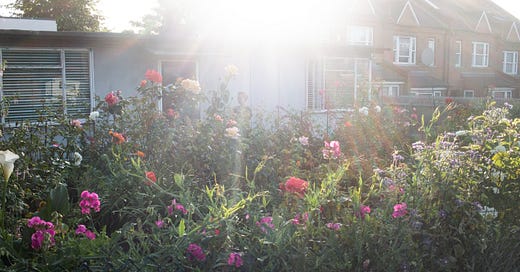



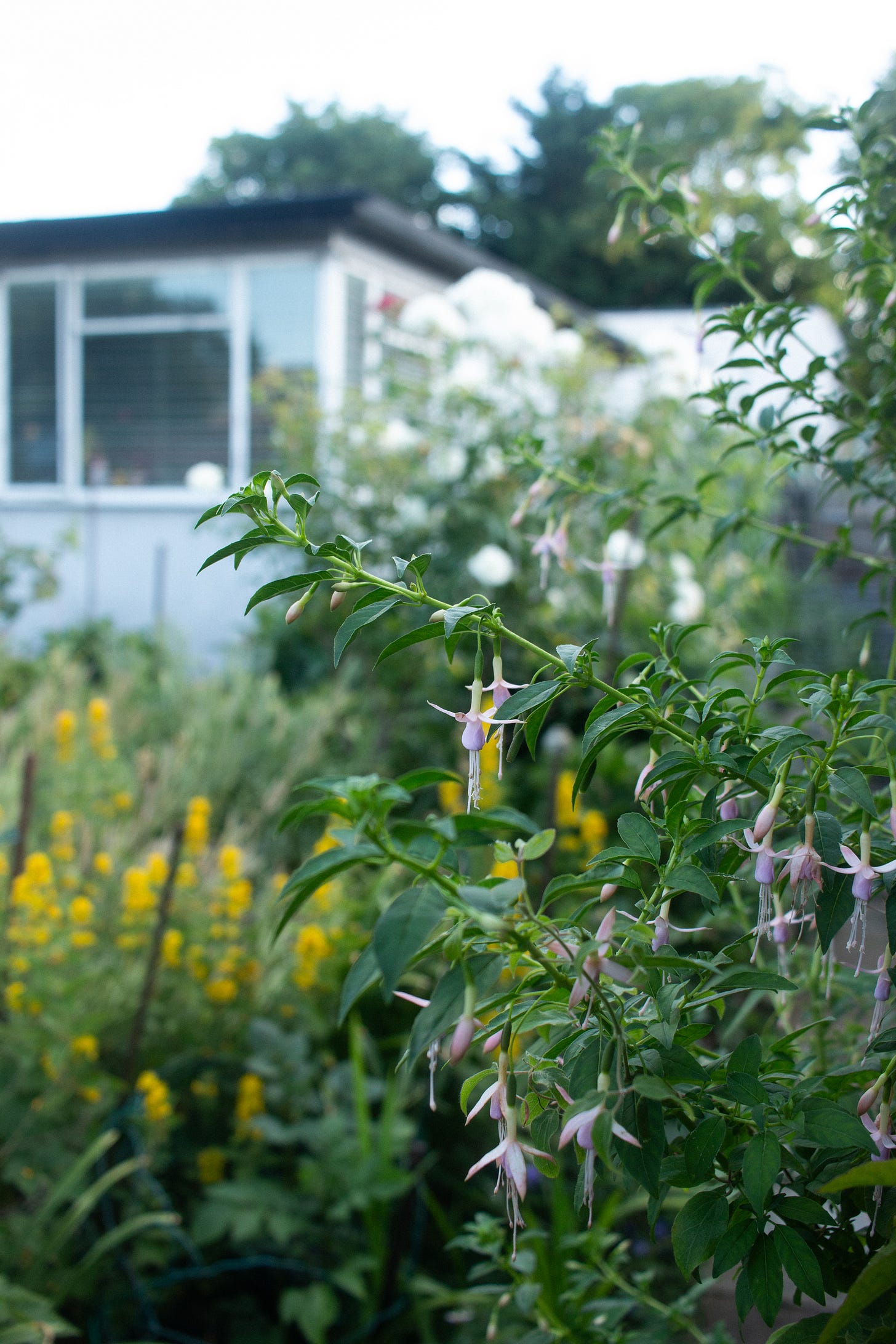
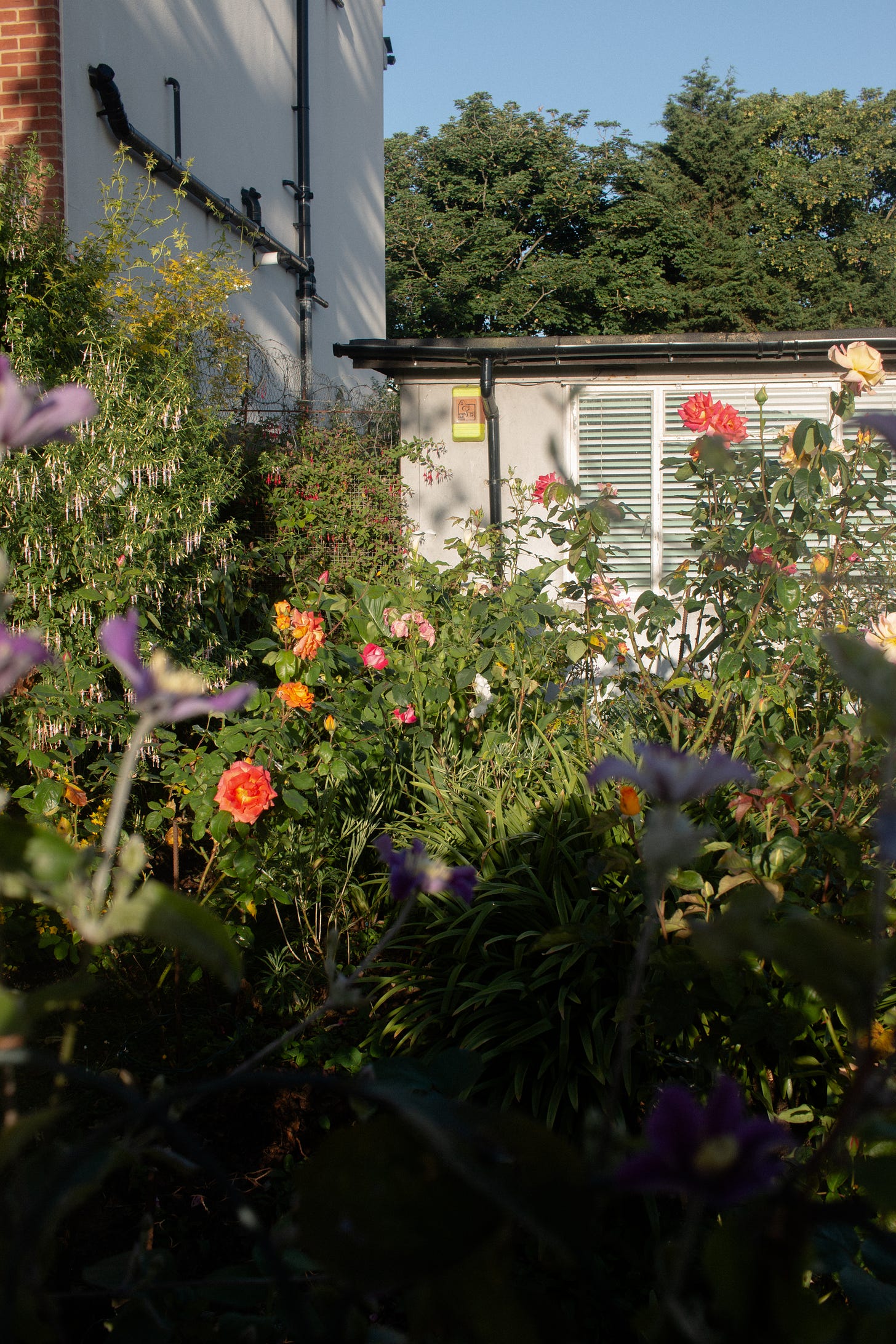
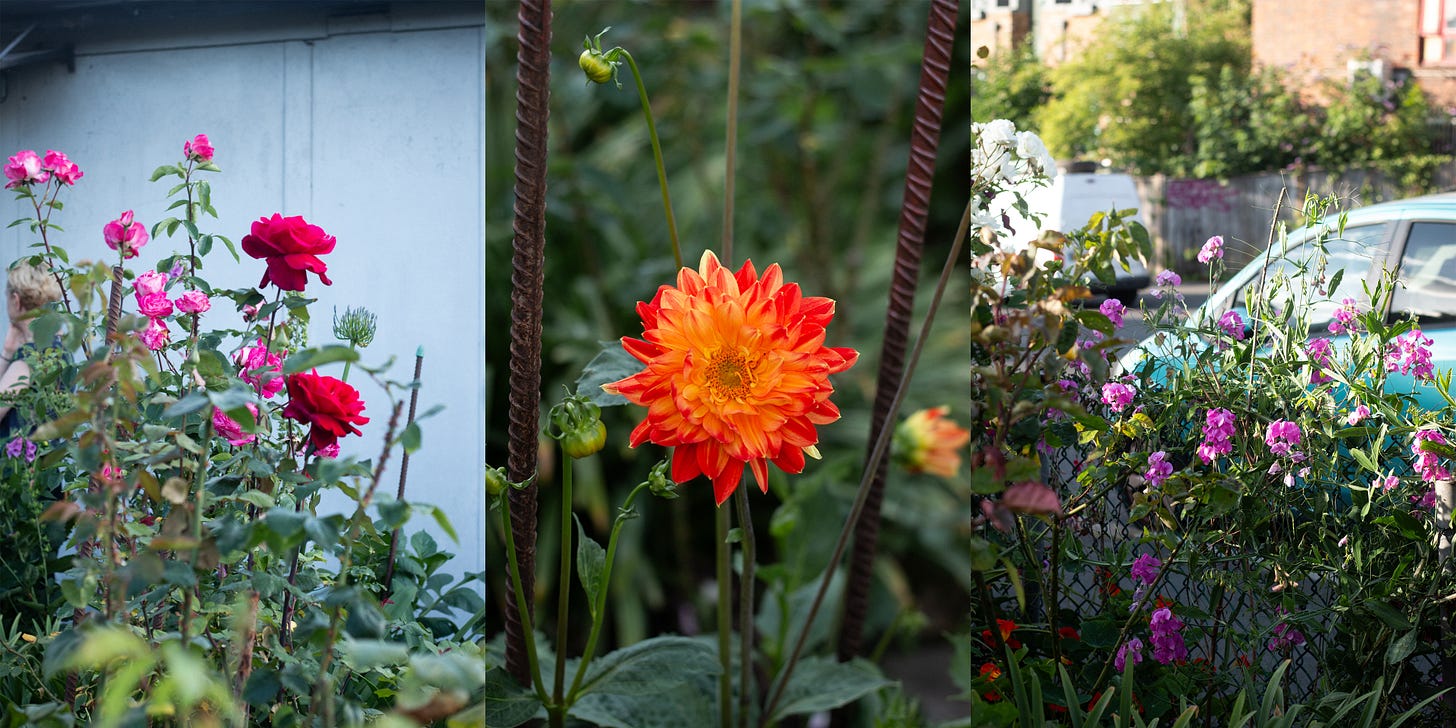

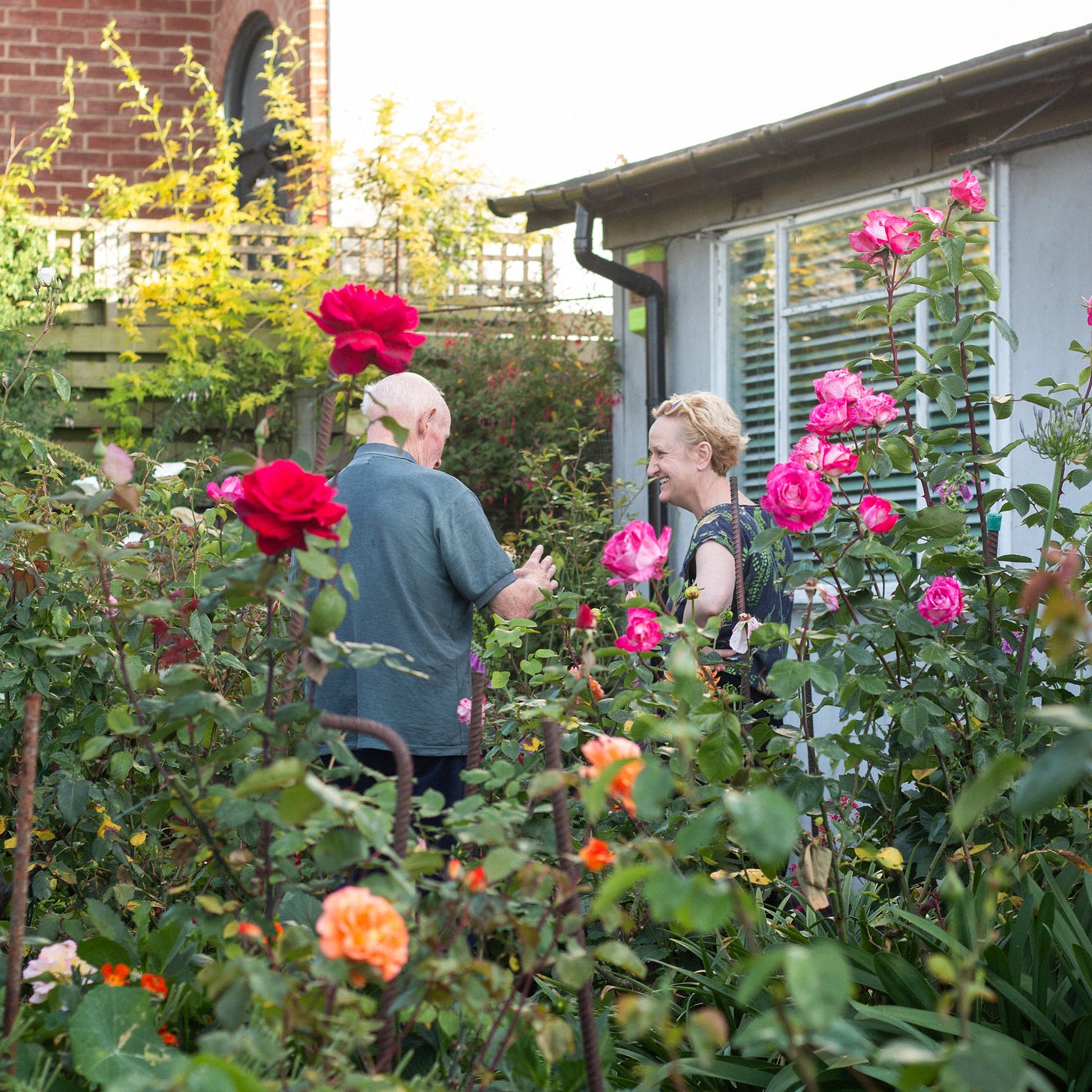

What Eleanor said - and so beautifully written Ros, as ever. Thank you all for this piece, it was so good for the soul 💕
Long live community and front gardens!